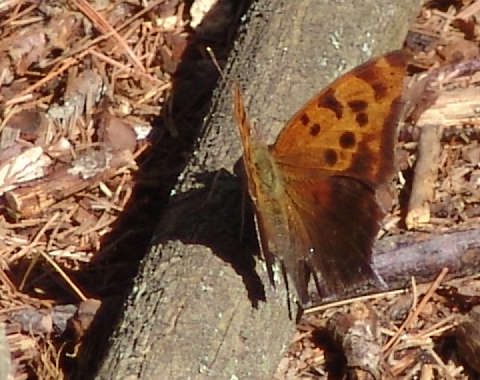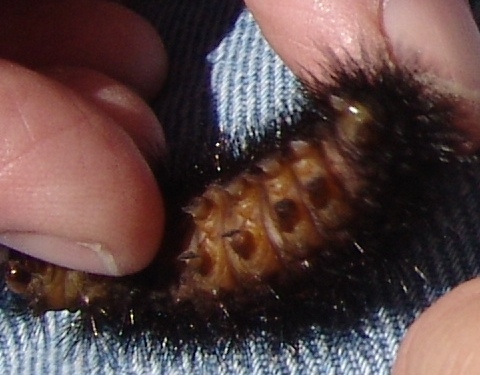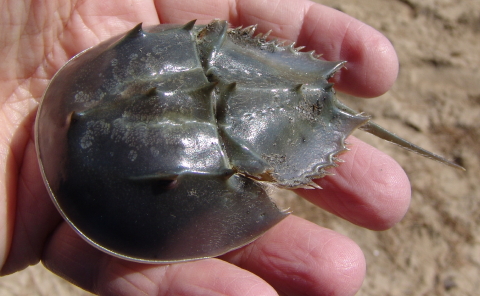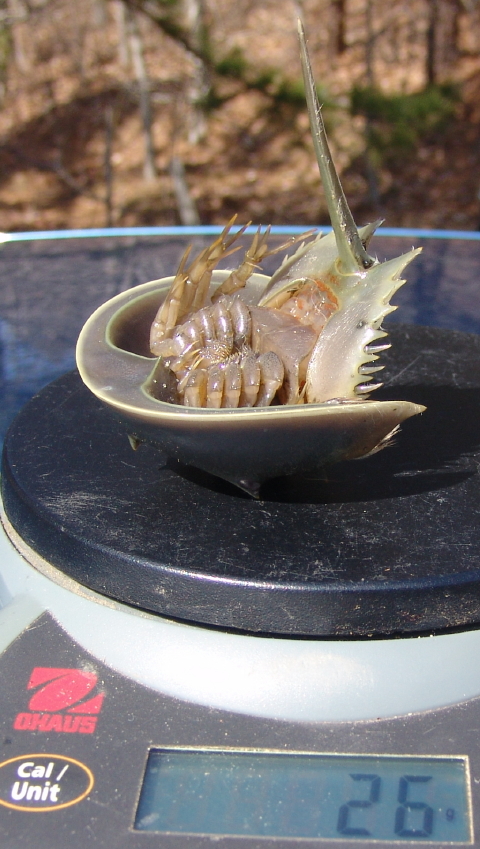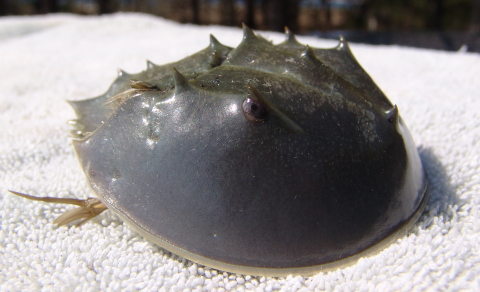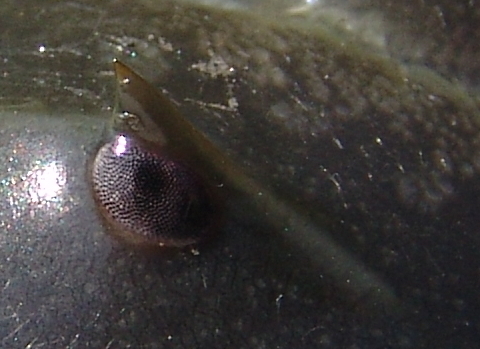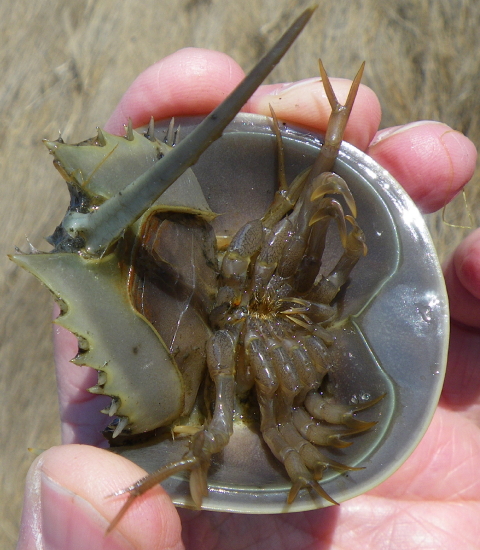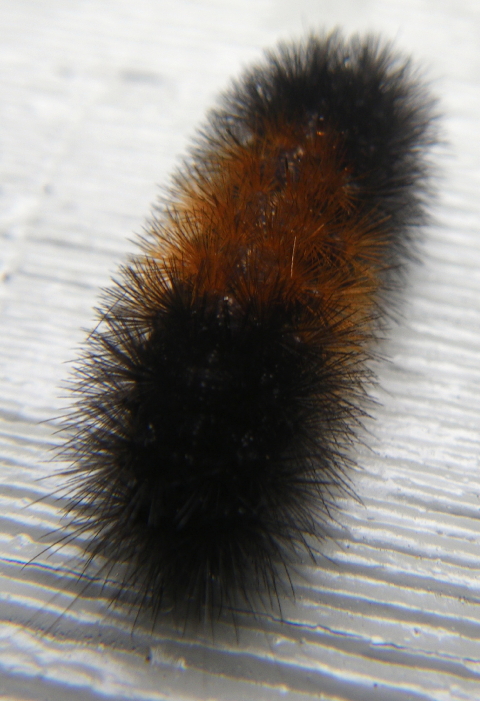Tiny, Silver-Dollar Sized Juvenile Horseshoe Crab
It isn’t springtime for the Turtle Journal team until juvenile horseshoe crabs emerge from winter slumber from underneath the soft, muddy bottoms of salt marsh channels. Like everything else this year, that emergence seems to have been delayed nearly a month by a chilly March and April.  We first discovered active horseshoe crabs on April 18th in South Wellfleet on Outer Cape Cod. Last year we recorded a mid-March emergence of juvenile horseshoe crabs; see Mid-March Emergence of Juvenile Horseshoe Crabs, which also provides a detailed morphological examination of these critters.
Juvenile Horseshoe Crab Tracks in Marsh Channel
Juvenile horseshoe crabs spend their first couple of years in protected salt marsh channels before venturing outside this nursery habitat. As we peeked into marsh creeks of South Wellfleet last Thursday, we saw a large number of juvenile horseshoe crab tracks carved into the soft bottom. If you solve the maze and figure out where the critter is heading, you can find the juvenile horseshoe crab burrowed at the end of the line; that is, in theory. In practice, though …. well, it simply takes a lot of practice, so to speak, to actually find these elusive critters. Unlike adults, juvenile shells are light colored in tones that blend perfectly with marsh channel bottoms.
Two Juvenile Horseshoe Crabs
We found a number of horseshoe crabs and selected these two perfect juveniles to examine more closely. The tiny horseshoe crab on the right is about the size of a silver dollar. The one on the left is about the size of a hockey puck.  The horseshoe crab’s exoskeleton (shell) does not expand. To grow, horseshoe crabs must molt, as many as five times in the first year, three in the 2nd, two in the third and once a year thereafter until maturity is achieved after nearly a decade.
Two Juvenile Horseshoe Crabs
In the set-up photograph above, the size differential between the two juveniles horseshoe crabs is more easily discernible.
Spring Awakening of  Juvenile Horseshoe Crabs
Before releasing these critters back into the salt marsh, we took a few moments to observe their movements and behavior.
Tiny Juvenile Horseshoe Crab
The tiny juvenile horseshoe crab was quite small, about the size of a Liberty silver dollar. All of its point and edges where sharp and fresh, as though the critter had freshly molted.
Ventral (Bottom) Side of Tiny Juvenile Horseshoe Crab
The ventral (bottom) view of this tiny horseshoe crab clearly shows the five pairs of walking legs, the forward feeding pincers (Chelicerae), and the rear book gills.  The telson (tail spine) has slipped between Don’s fingers.






